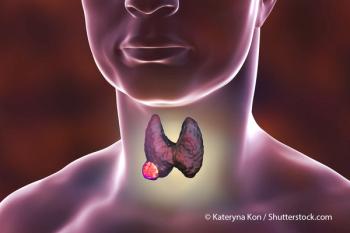
Lobectomy More Effective, Economical for Suspected Papillary Thyroid Cancer
Undergoing a lobectomy for thyroid nodules suspicious for papillary thyroid cancer on fine-needle aspiration was more cost effective and was associated with greater effectiveness compared with total thyroidectomy.
Undergoing a lobectomy for thyroid nodules suspicious for papillary thyroid cancer on fine-needle aspiration was more cost effective and was associated with greater effectiveness compared with total thyroidectomy, according to the results of a study presented at the 2016 Clinical Congress of the American College of Surgeons, held October 16–20 in Washington, DC.
“It is important to note, this finding does not mean that lobectomy is only a cost-effective alternative; we call a strategy 'cost-effective' compared with the alternative if it costs more, or the same, but is associated with better effectiveness,” said lead investigator Zaid Al-Qurayshi, MD, MPH, of the department of otolaryngology–head and neck surgery at the University of Iowa Hospitals and Clinics in Iowa City, and formerly of Tulane University, in a
According to the study, the American Thyroid Association Guidelines currently recommend lobectomy for patients with nodules suspicious for papillary thyroid cancer. If pathology identifies stage III or IV cancer, then total thyroidectomy is completed.
The researchers used a Markov model cost-utility analysis for a base-case followed for 20 years postoperatively. The case was a woman aged 40 with a single 1-cm thyroid nodule suspicious for papillary thyroid cancer. Cost and probabilities data were used from the year 2013.
Using the assumption that there is a 12% chance of having stage III or IV thyroid cancer requiring thyroidectomy, total thyroidectomy produced an incremental cost of $2,678.30 and an incremental effectiveness of –0.25 quality-adjusted life-years compared with lobectomy.
Even after adjusting for a 50% risk of unilateral current laryngeal nerve injury of hypothyroidism after lobectomy, total thyroidectomy was still not a cost-effective alternative to lobectomy. In fact, the researchers found that total thyroidectomy was only cost-effective when there was a more than 38% chance of identifying stage III or IV disease on pathology.
These findings may be more meaningful for patients who have benign tumors or stages I or II papillary thyroid carcinoma confirmed by pathology studies after surgery, Al-Qurayshi explained.
“This population represents the overwhelming majority of patients with suspicious-for papillary thyroid carcinoma on biopsy,” Al-Qurayshi said. “Avoiding total thyroidectomy in those patients not only will have better clinical outcomes as shown previously, but will also have economic advantage at the population level as shown in the current analysis.”
Newsletter
Stay up to date on recent advances in the multidisciplinary approach to cancer.

























































































